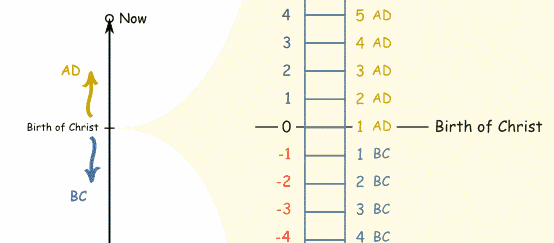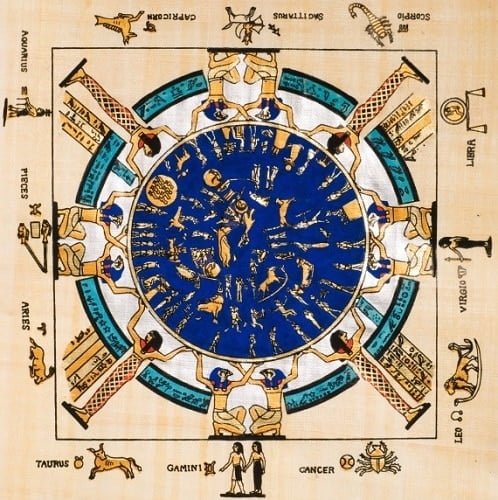
COUNTING YEARS
WHEN we count the years we establish a chronology. The British system uses ordinal numbers (1st, 2nd, 3rd, 14th, 21st…) while the Spanish system uses Roman numbers (s.I, s.II, s.III, s.XIV, s.XXI)
10 years – a decade
100 years – a century (e.g. 1st century-s.I from the year 101 to 200)
1,000 years – a millennium (e.g. 2nd millenium-s.XX from the year 1001 to 2000)
Today we are in the CHRISTIAN ERA. Our era began 2006 years ago, when Christ was born.
Dates before Christ: BC
Dates after Christ: AD (Anno Domini)

Years Before and After the Christian Era
So 550 BC means 550 years before Jesus was born
And 2000 AD almost means 2000 years after Jesus was born … except AD started at 1, not 0

So, 2 AD is actually 1 Year after Jesus was born
And 2000 AD is actually 1999 Years after Jesus was born.
“2000 AD” or “AD 2000”
Should “AD” be written before or after the number?
It WAS common to write it before (the standard was to put “AD” before the year and “BC” after), but now many people put “AD” after the year number. So you decide!
What is CE and BCE?
They are recent terms that mean the same as AD and BC:
CE means “Common Era” and is the same as AD
Example: 2012 CE is 2012 AD
BCE means “Before Common Era” and is the same as BC
Example: 500 BCE is 500 BC
Other Calendars
There are other ways of saying what year it is!
Example, Muslims have dates that relate to Mohammad’s emigration from Mecca to Medina called the Hijra, and so they use AH dates. The Year 2012 AD is 1433 AH (but the years don’t have an exact match, because AH years are shorter!)

WORKSHEETS:
POWERPOINT PRESENTATION:
VIDEOS:
